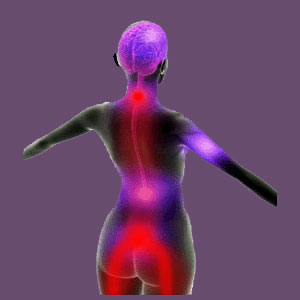
Fibromyalgia and piriformis syndrome can be related in origin. FMS and piriformis pain are both often enigmatic conditions that typically involve misdiagnosis and failed treatment. In our extensive and long-term study of fibromyalgia, we have discovered many facts about the condition which also not coincidentally often apply to piriformis syndrome, as well.
We have observed many patients who have received a diagnosis of fibromyalgia demonstrating what amounts to piriformis syndrome. Symptoms are identical, yet diagnosticians place the expression as being part of FMS, rather than dealing with it as a separate condition. This occurrence sparked our interest to investigate the relationship between these 2 seemingly very different pain conditions and has revealed some fascinating truths that can not be disputed.
This essay explores the link between fibromyalgia and piriformis syndrome. We will examine why many FMS patients demonstrate piriformis symptomology and how piriformis pain might even be the start of a larger scale FMS condition.
Fibromyalgia and Piriformis Syndrome Early Warning
We have observed a significant number of patients who sought help for piriformis syndrome and were diagnosed and treated without success. Early in their treatment efforts, these patients began to experience much wider-ranging symptoms that spread quickly throughout the soft tissues of the body. Eventually all were diagnosed with fibromyalgia. In these cases, all the patients were women between the ages of 21 and 45. Many of these women had excellent careers and a majority of these patients were victimized by some traumatic occurrence early in life, including sexual molestation, physical or emotional abuse and/or rape.
In these cases, did piriformis syndrome really exist or was it just an early warning of impending FMS? Why did the pain begin in the pelvic area, particularly in patients who were victims of sexual crimes and abuse? The answers to these questions might lead to improved understanding of the mindbody link between piriformis symptoms and fibromyalgia.
Fibromyalgia and Piriformis Pain
Piriformis syndrome is identified by its characteristic compression of the sciatic nerve and or pudendal nerves enacted by the powerful piriformis muscle in the hip/pelvic anatomy. However, the fact that remains puzzling to enlightened care providers is why the piriformis spasms and constricts the nerve to begin with.
Although many piriformis patients demonstrate an abnormality wherein the sciatic nerve runs through the piriformis muscle rather then beneath it, this anatomical irregularity only applies in some cases of piriformis pain. Many people who have been diagnosed demonstrate typical sciatic nerve placement in relation to the piriformis, while others who demonstrate the atypical sciatic nerve positioning will never develop pain.
Fibromyalgia is also easily diagnosed and defined as substantial pain in many areas of the anatomy, including several noted locations in the soft tissues of the anatomy. However, doctors have no idea why FMS occurs or exactly what is causing the painful torment that patients endure. There are literally dozens of theories, yet none in the physical realm seem universal or even plausible, given the great diversity of patient profiles, symptoms and locations affected.
All doctors can agree on is that both piriformis syndrome and fibromyalgia are both soft tissue pathologies of unknown origin that are highly symptomatic and often defy successful treatment for extended timelines of care.
Fibromyalgia and Piriformis Syndrome Singular Origin
One of the more enlightened theories of the relationship between FMS and piriformis syndrome is that both can be caused by the exact same mindbody process. Many of Dr. Sarno’s tension myositis patients were previously diagnosed with piriformis syndrome and/or fibromyalgia, yet he concluded that all were suffering from TMS, which is a condition of psychogenic origin.
No case of fibromyalgia has ever been verified as coming from any known source process. Similarly, most cases of piriformis syndrome are not linked to injury or structural abnormality, but instead are idiopathic in their causative mechanism. These factors make both of these conditions perfect candidates for psychosomatic sourcing. This is not to say that since doctors do not know the physical cause that the conditions, that they must be psychosomatic. Instead, it is simply rendering a scientific verdict that certain bits of conclusive evidence are well known and documented, all pointing towards mindbody enactment.
Ischemia has been proven to exist in both sets of patients. Ischemia is well known to affect soft tissues and cause the types of widespread pain common to FMS, as well as the muscular spasm inherent to piriformis syndrome. These types of ischemia are not caused by circulatory issues, vascular compression syndromes or any structural or systemic problems. Instead, it is clear that these forms of ischemia are purposeful implementations of the subconscious mind to act as defense mechanisms against repressed and suppressed sensitive psychoemotional issues. We are confident in this assertion, since we have utilized knowledge therapy remarkably effectively in both patient populations and have seen it make short work of pain that could not be banished using drugs, injections, physical therapy, and even surgery. To learn more, please read our full coverage of fibromyalgia on Cure-Back-Pain.Org.
Piriformis Pain > Causes of Piriformis Pain > Fibromyalgia and Piriformis Syndrome





